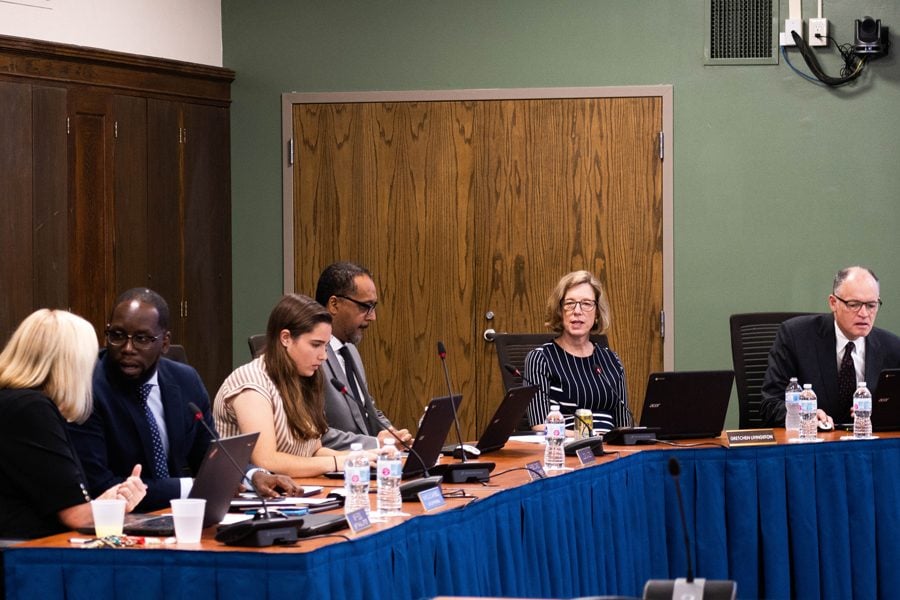District 202 reports on summer school, activities, discipline still show racial disparities
Alison Albeda/Daily Senior Staffer
Evanston Township High School/District 202 board members listen to reports during a Monday meeting. The figures presented showed that racial disparities still exists in summer school attendance, student activities and disciplinary action — although the latter has improved drastically.
October 9, 2018
Evanston Township High School administrators and staff presented figures on summer school attendance, student activities and discipline and suspension to the board on Monday, finding racial disparities were still present in each report.
Bill Farmer, the director of ETHS summer school since 2015, reported that summer school enrollment was slightly lower than in previous years. He attributed this “blip” to a decrease in students failing courses during the academic year.
However, District 202 board member Jonathan Baum expressed concern over the racial gap in a summer school class designed for incoming freshmen: “Access ETHS.” The class is meant to prepare students for high school, and Baum said there were three times as many white students as black students enrolled.
Farmer said he is mindful of the imbalance. Administrators and board members also found that the cost associated with summer school could be a potential impediment, even though there is a lower fee for students on free or reduced lunch.
“It can be a limiting barrier just to have to pay anything,” Farmer said.
Following Farmer’s report, director of activities & the Student Success Center Nichole Boyd told the board that 59.2 percent of students were involved in extracurriculars — which includes clubs, athletics and fine arts programs — in the 2017-2018 academic year. The board has previously set a goal of 100 percent participation activities and extracurriculars.
When broken down by race, 53 percent of Asian students participate in clubs. Forty-three percent of white students, 33 percent of Native Hawaiian students, 33 percent of American Indian students, 29 percent of Hispanic and Latinx students and 26 percent of black students participate. However, those statistics do not capture participation in athletics or fine arts.
Finally, Keith Robinson, the associate principal for education services, told the board that the number of suspensions decreased 29 percent in 2016-2017 to 2017-2018. He added that disciplinary actions decreased 35 percent over the same time period. Over the last nine years, the number of students who have received a suspension has gone down by 46 percent.
Robinson said there has been a school-wide effort to focus on the disproportionality of black male students who receive disciplinary actions, and he said the school has seen “a dramatic decrease” over the past few years: Disciplinary actions and suspensions involving black male students have fallen from 952 in 2015-2016 to 656 in 2017-2018.
Thirty-two percent of disciplinary actions involving black males are categorized as “disruptive acts,” and a further 23 percent fall under “defiance of authority,” making those two categories the two largest. Moving forward, Robinson said, a subcommittee will review what kind of incidents fall under those two categories.
“We want to tell the story of what exactly is a disruptive act, what exactly is a defiance of authority, so we can really target reductions,” he said.
Many board members said though the statistics weren’t perfect, they were excited by the school’s progress in reducing inequity. Board member Mark Metz said these low suspension levels seemed nearly impossible when he joined the board in 2009.
“I would’ve been afraid to hope that we could’ve achieved the kind of productions and results that we’ve achieved so far,” Mentz said. “This is such good news.”
Email: [email protected]
Twitter: @birenBOMB


